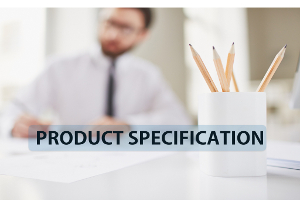Grand Slam: Increasing Building Product Specifications
Companies that reward users by solving a problem reinforce their motivation for the action taken. In his national bestseller How Build Habit Forming Products, researcher Nir Eyal states “ultimately all businesses help users achieve an objective. To keep users engaged, products need to deliver on their promises.” How can building product manufacturers reward architects for their specification decisions? Let’s review how variable rewards work…
An Architect’s Brain
The human brain evolved over thousands and thousands of years to help figure out how things work in the world. When a person understands causal relationships, they retain information in their memory. What we call habits are simply how the brain can quickly retrieve an appropriate behavioral response to a routine process we have already learned. According to Eyal, habits are shortcuts to go about tasks that we perform with little or no conscious thought. How can building product manufacturers influence the habits of architects to increase product specifications?
Increasing Product Specifications
Variable rewards are found in many different products and experiences. Variable rewards motivate people to check email, surf the web, and find bargain deals. Eyal indicates that there are three types of variable rewards that include: the tribe, the hunt, and the self. People want to feel accepted and included. Rewards of the tribe are created by connecting with other people. Design professionals in the construction industry learn from each other. When designers observe their colleagues and friends using a specific building product or design strategy, they learn from the experience. If the building product solves a design issue and helps contribute to the success of the project, then there is an increased possibility that the building product will be specified again.
“The need to acquire physical objects, such as food and other supplies that aid our survival, is part of our brain’s operating system,” states Eyal. The rewards of the hunt are embedded in the human brain from thousands of years of chasing Sabertooth tigers with spears. In modern times, we can see the rewards of the hunt translated into the pursuit of resources and information. Slot machines compel gamblers to spend a billion dollars a day in American casinos. The casino usually wins; however busloads of senior citizens flood these casinos daily in the pursuit of resources. Researching and specifying building products that solve many problems can help fulfill a designer’s passion for thoughtful and efficient design. The hunt for the perfect product can become an intoxicating quest for some designers. Instead of chasing windmills like Don Quixote, the architect chases a building product rep down the street with a sample yelling “can you make this thingamajig in neon green?”
Finally, there are rewards that relate to personal satisfaction. Most people are hardwired to solve problems, just for the simple satisfaction of doing so. The pain staking search for the best building product can make an architect happy even though they might be cursing under their breath for several hours. Eyal points out that “only understanding what truly matters to users can a company correctly match the right variable reward to their intended behavior.” A player that successfully completes a quest in a video game receives personal satisfaction that they exercised their skills and competency to win. An architect that takes a free AIA online course and passes the difficult quiz may achieve personal satisfaction due to their knowledge base and expertise.
Don’t Ever Lie to an Architect
Or they may beat you to death with a set of blueprints! Influencing behavior is part of good product design. However, coercion, green-washing, and outright lies will land you in a heap of trouble. Building product reps must act in an ethical and high-principled manner. Building product manufacturers are encouraged to create products that help architects let them do what they want to do. Architects enjoy the freedom to specifying different building products. “When our autonomy is threatened, we feel constrained by our lack of choices and often rebel against doing a behavior. Maintaining a sense of user autonomy is a requirement for repeat engagement,” says Eyal. It is crucial that building product manufacturers speak with architects to find out what they like about their product. How does your building product solve a problem, alleviate a pain, or achieve one of the variable rewards?
For more information or to discuss the topic of this blog, please contact Brad Blank





